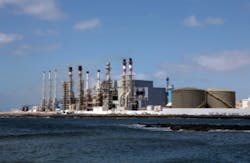Energy Recovery Inc. to supply technology for two desalination plants
SAN LEANDRO, Calif. — Energy Recovery Inc., who works in harnessing reusable energy from industrial fluid flows and pressure cycles, announced that EPC Abengoa will use the Company’s premium PX technology in two desalination plants in Ghana and Oman, according to a press release.
Both of these arid countries are home to growing populations with limited access to fresh water resources.
The PX Pressure Exchanger will save more than 52 million kilowatt hours (kWh) per year in each country. For reference, it takes about 1 kWh of energy to power a hot shower for three minutes, stated the release.
Sustainable solutions developer Abengoa Water will construct a desalination plant in Nungua, Ghana — the first in the country’s history — for the Ghana Water Limited Company and an expansion in Barka, Oman for the owners of the Barka I Independent Water and Power Project (IWPP).
According to George Kotsovos, Standard Bank’s head of power and infrastructure finance, the Nungua desalination plant is an important project for Ghana, providing 400,000 people with fresh drinking water.
“For years, we have counted on Energy Recovery to provide us with the most efficient energy recovery solutions. For small- to medium-sized projects such as Ghana to larger, mega projects like Barka I, Energy Recovery is simply the best energy recovery device in the market providing the highest cost savings, most reliability and lowest carbon footprint,” said Carlos Cosín, CEO of Abengoa Water. “We’ve already seen extensive cost savings across our projects with Energy Recovery and expect the same return on these two new plants.”
Read the entire press release here.
